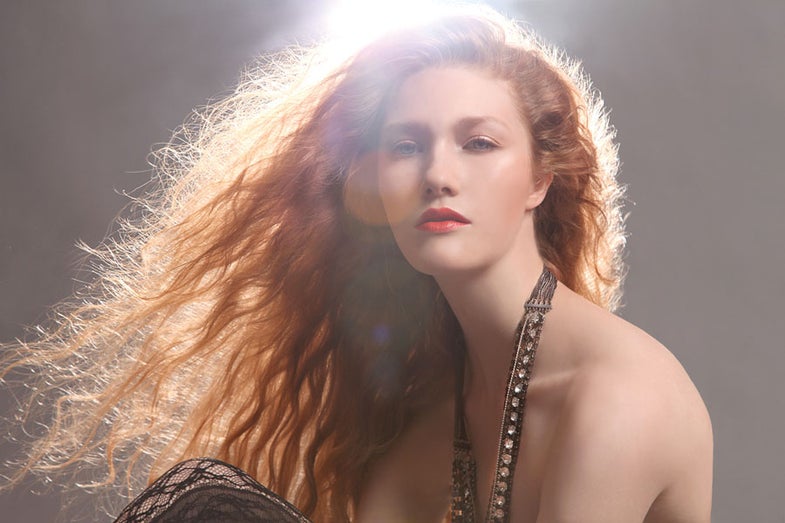How To: Use Halo Lighting In Portrait Photography
Kick your portraits up a notch by adding color, texture and life to hair with halo lighting

When New york portrait and fashion photographer Carol Weinberg revamped her website, she wanted to create some new work to show off her skills. This stunner is the result.
She started her shoot with standard portrait lighting. The main light was high and to one side, and she placed white fill cards on the floor around the seated model to open up the shadows. But, as often happens with routine setups, the lighting wasn’t working. Model Anna’s amazing hair needed more color, texture, presence, and life.
Weinberg got all this (and more) by introducing halo lighting—and a fan. “This lighting is tricky,” she warns. “It’s a form of backlight that can add a nice spark, but with subjects who have thinner hair, it can spill forward and strike the back of the ear, causing it to glow, even putting a hot spot on the cheek.”
Halo lighting doesn’t allow the model to move much, so you have to be working with a fairly relaxed subject, and one with lots of hair. “The more the better,” says Weinberg.
To get this effect, place the halo light behind and slightly away from the subject, halfway up the back, and—here’s the important part—tilted upward so that its output skims the back of the coif. Aiming it through the hair toward the lens can create excessive flare. “A little flare can be nice,” explains Weinberg. “Too much can wash out and flatten the face, and veil the eyes.”
If the flare from the halo light becomes too intense, Weinberg tones it down by adding a sheet of spun-glass diffusion material over the backlight.
Other tips for beauty lighting:
•Test your lights with a stand-in. Weinberg typically spends the first 30 to 40 minutes of a portrait session fine-tuning her lighting. If she performed these lighting tests on her subject, the model could become bored, which might become apparent in the images, especially as the photo session progresses. Being on the set to stand in for a subject can be one of the most important roles played by an assistant.
•Try a crisper mainlight. “For the key light, I like a large octabank for softness,” says Weinberg. “But if the face and eyes aren’t popping, I switch to a beauty dish for a crisper light.”
•Get detail back with harder fill. To minimize the contrast-reducing effect of halo lighting, try hardening the front light a bit by using gold or silver instead of white fill cards.

Kris Holland/Mafic Studios
“I like beauty lighting on the clean side, with a minimum of shadows,” says Weinberg. “If the face doesn’t pop, I’ll switch to a modified Rembrandt lighting [as here] for more shape. I put the main light high and use large fill cards to keep the shadows open.” For this image, Weinberg’s main light was a Profoto Pro head in a 5-foot Profoto Octa RF softbox (A), and the halo light behind the subject was another Profoto Pro head aimed upward (B). Both were powered by a single 2400 Ws Profoto 7A power pack (C). White fill cards brightened the shadows (D). She shot with a Canon EOS 5D Mark II and EF 70–200mm f/2.8L lens (E) with an exposure of 1/125 sec at f/8, ISO 100. A small fan (F) gave life and shape to the hair. House fans will work for this, says Weinberg, and the best offer continuous control, not preset high, medium, and low power options.